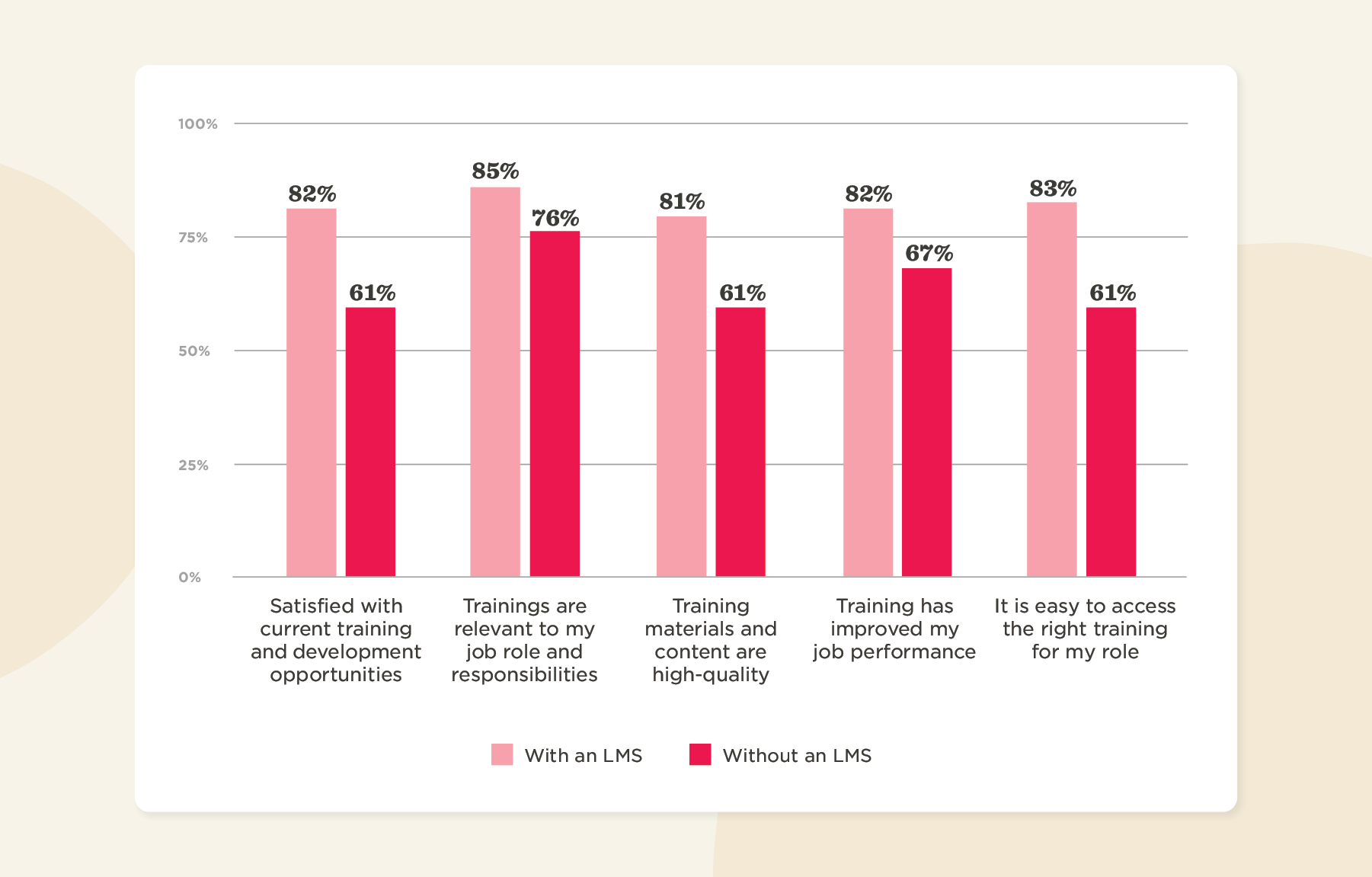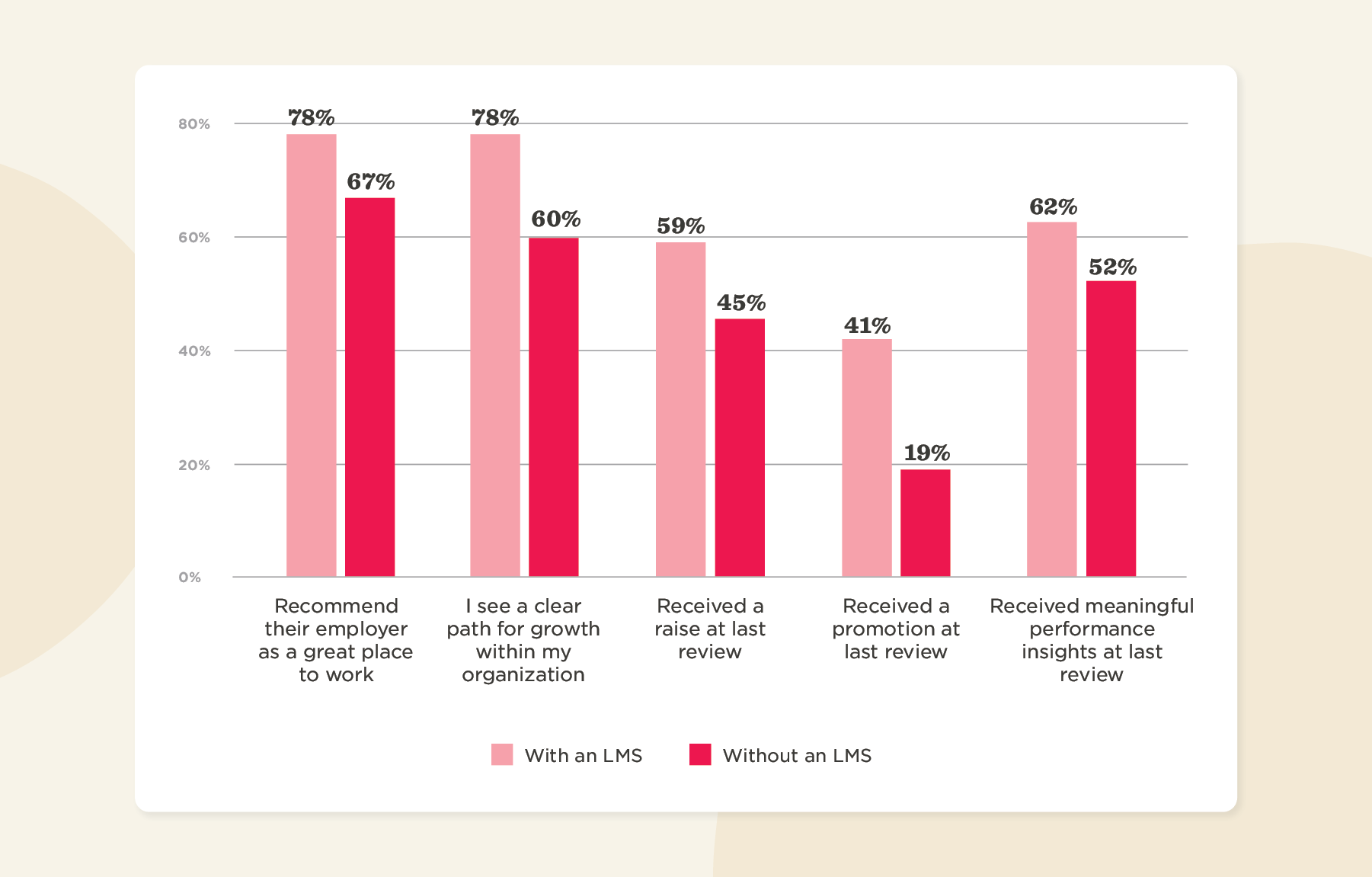In today’s fast-paced, tech-fueled world of work, professional development isn’t a perk. It’s the path forward. For modern professionals, learning is the key to staying relevant. And for businesses, it’s the key to staying competitive.
HiBob’s latest research confirms what HR leaders are already feeling on the ground: Employees aren’t just hoping for meaningful development. They expect it. And when training is structured, accessible, and relevant to their careers, they don’t just complete it. They thrive because of it.
Why learning is a business imperative, not a bonus
We’re seeing a shift across every industry. As technology evolves faster than most teams can keep up, businesses face a critical challenge: How do you stay ahead when your tools—and your market—are constantly changing?
The answer lies in your people. And more specifically, in how you support their growth. The only way to keep your edge in a saturated market isn’t by hiring expensive unicorns who already know the latest tools. It’s by growing your own. Continuous upskilling and reskilling aren’t just how people today stay professionally relevant. They’re how modern companies sharpen their competitive edge.
And the data backs it up.
The power of LMS-driven learning
Not all training is created equal.
While offering professional development is a solid first step, how that training is delivered plays a crucial role in its effectiveness. Our research shows that organizations using an LMS don’t just provide more efficient learning experiences. They offer training that resonates, sticks, and drives real results.
HiBob’s global survey of 3,600 full-time employees across the United States, United Kingdom, Australia, and DACH regions in late 2024 found that 75 percent of employees have access to some form of training and development. But here’s the kicker: Only 71 percent of those organizations use a learning management system (LMS) to deliver it.
And the difference between LMS and non-LMS training? It’s not just measurable. It’s massive.
LMS learners are more satisfied and more engaged
The difference an LMS makes is tangible. People who learn through structured, tech-supported programs consistently report higher satisfaction, stronger alignment with their goals, and better performance outcomes. The data tells a clear story: When learning is well-delivered, people feel more supported, more capable, and more connected to their employer.
Professionals who receive training through an LMS report significantly higher satisfaction and engagement across the board. Those in LMS-enabled environments are more likely to feel that their development opportunities meet their expectations, with 82 percent expressing satisfaction, compared to just 61 percent of those without LMS-supported training.
Relevance is another key differentiator, with 85 percent of LMS learners saying their training is directly applicable to their job responsibilities. Meanwhile, only 76 percent of non-LMS learners say the same. Similarly, 80 percent say their training aligns with their career goals, in contrast to 62 percent of professionals without an LMS.
The quality of training also improves with the right tools. Eighty-one percent of LMS learners believe their employer provides high-quality training materials, compared to just 61 percent of their non-LMS peers.
LMS users also see stronger performance outcomes, with 82 percent saying training has improved their job performance (compared to 67 percent without an LMS), and 83 percent say their employer makes it easy to access the right training for their role, whereas only 61 percent of people without an LMS agree.

When learning works, people stay
When professionals feel supported in their development, they’re more likely to see a future with their company and to speak positively about their experience.
Among those trained through an LMS, 78 percent say they would recommend their employer as a great place to work, compared to just 67 percent of people without access to LMS-powered learning.
That sense of connection extends to career vision, as well: 78 percent of LMS-trained professionals report seeing a clear path for growth within their organization while only 60 percent of those without LMS support say the same.
The benefits don’t stop at perception, either. According to our research, LMS-trained professionals are also more likely to report concrete outcomes from their performance reviews. Fifty-nine percent say they received a raise at their last review, compared to 45 percent of people who didn’t have access to an LMS.
Promotion rates follow a similar trend, with 41 percent of LMS learners reporting a recent promotion—more than double the 19 percent without LMS-supported development. And when it comes to actionable feedback, 62 percent of LMS-trained professionals say they received meaningful performance insights, compared to just 52 percent of their peers.

Will an LMS solve all my learning problems?
Not on its own. Purchasing an LMS probably won’t magically deliver better outcomes overnight. But it can unlock two major opportunities for real change.
First, implementing an LMS requires thoughtful planning. It gives HR teams a chance to step back and critically examine how you train and develop your people (and whether learning initiatives are successful): Are you prioritizing the right skills? Are those skills aligned with business outcomes? Can your people access learning at the right time, when it’s most useful and most likely to stick? A successful rollout depends on answering these questions first. That’s where the ROI begins.
Second, an LMS helps bring those answers to life. It offers a centralized space for content, consistent frameworks for navigating complex topics, and the flexibility to meet people where they are. It also frees managers from having to explain the basics, empowering people to push their learning further by using the expert for expert questions, not introductory content.
Companies achieve the best learning outcomes when they combine the right technology with the right strategy. That means aligning content to career goals, tying skills to business priorities, and clearly communicating the value of development. When learning is thoughtfully designed and embedded in the flow of work, LMS-supported environments give people a smarter, more connected experience—and that advantage compounds over time.
What people actually want to learn
It’s not just about offering training. It’s about offering the right training. People are clear about the skills they need most, and their preferences reflect the demands of modern work.
Across industries and roles, professionals most often prioritize problem-solving, communication, and leadership skills. Problem-solving tops the list for 23 percent of respondents, followed closely by communication at 22 percent and leadership at 19 percent. These choices reflect the skills people see as most essential to excelling in their day-to-day work and growing their careers over time.
Preferences shift depending on the nature of the role. Professionals in skilled trades and knowledge-based roles, for example, are more likely to focus on problem-solving—reflecting the need to analyze issues, think critically, and develop actionable solutions. In contrast, service-oriented professionals gravitate toward communication skills, which are key for interacting effectively with customers and teams.
Gender-based trends also emerged. While both men and women ranked problem-solving and communication as their top two choices, men showed a slight preference for problem-solving (25 percent), while women leaned more toward communication (21 percent). Leadership remained the third most requested skill across groups, reinforcing its universal relevance.
Skill preferences by region
Our research also showed that geography also plays a role in shaping skill priorities. For example:
- In Austria, professionals emphasize collaboration, time management, and strategic thinking
- In Australia, collaboration, communication, and problem-solving lead the list
- In Switzerland and Germany, communication, time management, and problem-solving rise to the top
- In both the UK and the US, collaboration and communication remain dominant, followed by either problem-solving or time management
The bottom line? No matter where they work, people consistently call for skills that help them collaborate, communicate, and adapt—especially in hybrid, cross-functional, and global work environments.
4 ways HR can turn learning into a competitive advantage
Great training doesn’t just happen. It’s designed with purpose, technology, and strategy. This is where HR leaders have the power to move the needle. Here’s how to start:
1. Prioritize the right skills
What the data says: Professionals across industries and regions emphasize problem-solving, communication, and collaboration as the most valuable skills for growth.
What HR can do: Survey your people and build programs focused on high-demand, high-impact skills while tailoring content based on role or region.
Why it matters: When training feels relevant to real-world challenges, people stay engaged and are better equipped to drive results.
2. Align training with career growth
What the data says: People want training that supports their current responsibilities and their long-term career aspirations. Those who receive training tied to professional growth are more likely to stay with your organization.
What HR can do: Map learning to job families, internal mobility paths, and promotion criteria to make development feel purposeful.
Why it matters: When people see a clear path forward, they’re more motivated, more loyal, and more likely to grow with your business.
3. Make training accessible
What the data says: People are more likely to complete training when it’s intuitive, flexible, and integrated into their daily flow of work.
What HR can do: Implement platforms that offer on-demand learning across devices and embed training in existing workflows and tools.
Why it matters: Accessible learning removes barriers, boosts participation, and turns development into a seamless part of everyday work.
Recommended For Further Reading
4. Invest in an LMS
What the data says: Organizations using an LMS provide their people with a superior training experience, leading to better engagement and job performance.
What HR can do: Choose an LMS that supports personalization, tracks progress, and integrates easily into your existing systems.
Why it matters: Structured learning drives better outcomes and builds a culture of continuous growth that keeps people engaged and businesses growing.
When learning is thoughtfully delivered and aligned with what your people actually need, it becomes more than a benefit—it becomes a business-critical advantage. In a fast-changing world of work, HR leaders have a real opportunity to lead from the front. By championing modern, scalable, and people-first development strategies, you’re not just supporting your teams, you’re future-proofing your business.
Learning is your competitive edge
In today’s world of work, one thing is clear: Learning isn’t optional. It’s how individuals grow and how companies evolve. Structured, LMS-supported training doesn’t just make learning easier. It makes it better, more relevant, and more impactful.
For HR leaders, this isn’t just about keeping up. It’s about propelling your organization forward and getting ahead. By investing in people-first learning strategies, you’re investing in skills that build a future-ready workforce, a standout employer brand, and a culture that people want to be a part of.
Because when people grow, businesses grow. The data proves it.


